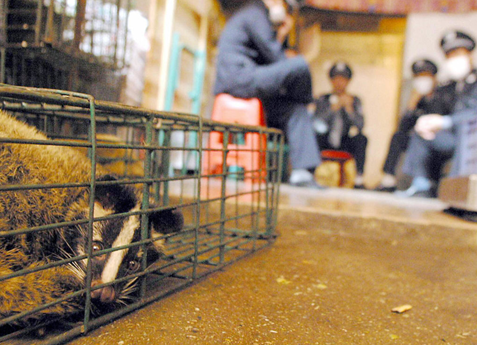Pathogens have always had its way in making it to a potential host, and even manage to mutate and spread virus around the world. These infectious microscopic organisms had brought the unprecedented COVID-19 global pandemic that killed millions of people.
While the virus that brought COVID was not the first pathogen to have been passed from animal to human, it most likely won't be the last, and although scientists cannot yet determine exactly what animal hosted the coronavirus, they believe that global wildlife trade is to blame.
This realization prompted scientists to study how the next pandemic can be prevented. They found that one-quarter of animals, specifically mammals, do host 'naturally-circulating viruses' that can be passed along to humans, regardless if it is legal or illegal trade. 75 percent of all known zoonotic viruses were detected in the mammals involved in wildlife trade.
Preventing the Next Global Pandemic

Research found that animal-borne pathogens such as viruses could become zoonotic diseases that may cause disease outbreaks, especially when it can be easily passed along from one human to another whether direct or indirect contact.
"Annually, it is estimated that international wildlife trade results in upwards of one billion direct and indirect contacts between wildlife, humans, and domestic animals," says lead author and conservation biologist Shivaprakash Nagaraju from The Nature Conservancy, India.
With close contact, chances of animal-borne pathogens are high, thus resulting to an outbreak. Researchers detected a bulk of these zoonotic viruses to few animal groups but they are concerned if they are 'looking at the right ones'.
"By pinpointing the species that pose the highest risk of passing zoonotic diseases to humans, we hope our research can help global health experts prioritize where to concentrate their efforts to prevent the next global pandemic," Nagaraju explained.
Read also: Vaccine Scam: Thousands in India Injected With Salt Water After Paying for Fake COVID-19 Vaccine
Wildlife Trade as a Global Problem
Although there are definitely other factors that bring huge risks of a potential outbreak, like the zoonotic viruses that existed before the COVID-19 pandemic, current wildlife trade whether wild, traded and domesticated - "points to other potential sources that may have been overlooked".
"Traded mammals also harbor a distinct composition of zoonotic viruses and different host reservoirs than non-traded and domesticated mammals," Nagaraju wrote in the paper.
In the current wildlife trade, major carrier of the virus are primates and hoofed animals such as goats, cattle and pigs, compared to bats and rodents which carries a sizable pathogenic load. However, when we talk about outside of the wildlife trade, rodents and bats are still the major hosts of nature's zoonotic viruses.
Out of the estimated 1.7 million undiscovered viruses, researchers admit they had only scratched a surface.
"The phylogenetic signal of viral load we detected could be a function of both the incomplete sampling of mammal species for viruses and undiscovered viral diversity in mammals."
Other recent studies also suggests that scientists need to look beyond bats and rodents "because these animals may not be the 'special' viral reservoirs past research has made them out to be." In addition, these animal groups contain more species which may be able to host more viruses that we don't know of, yet.
© 2025 NatureWorldNews.com All rights reserved. Do not reproduce without permission.





